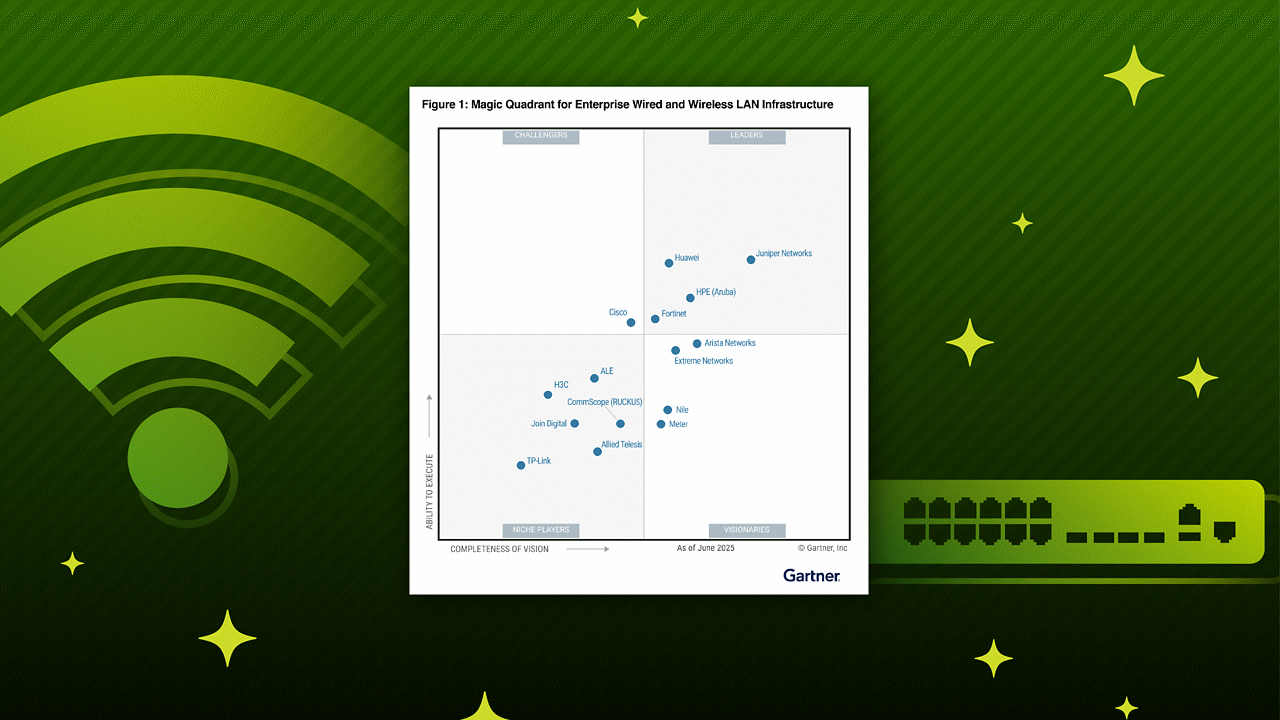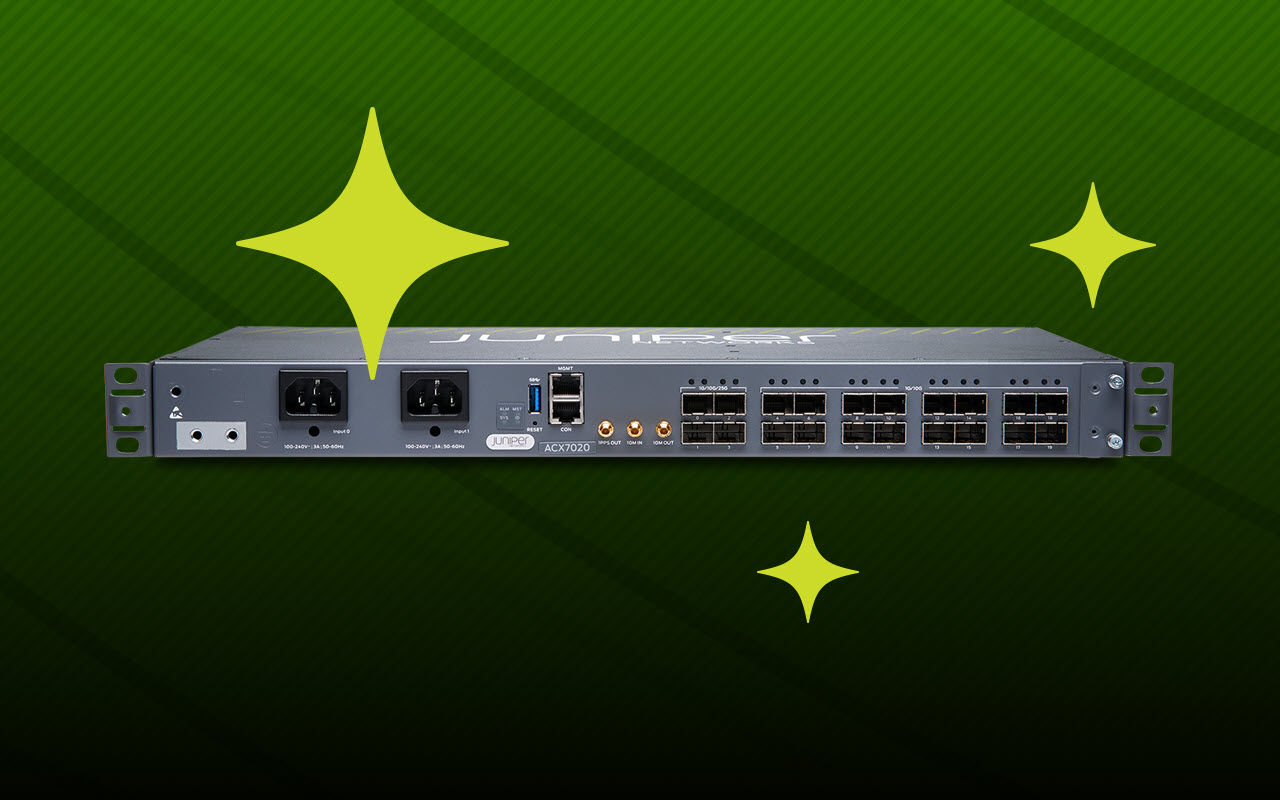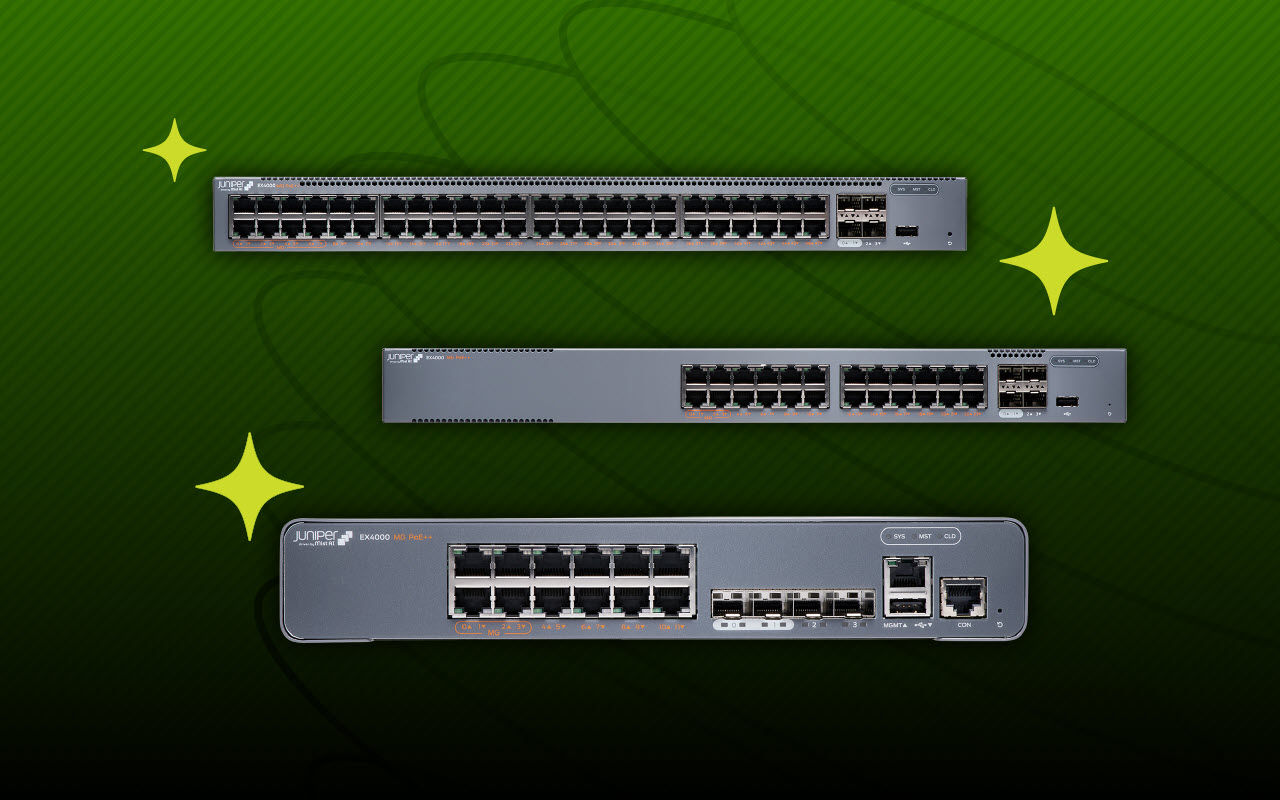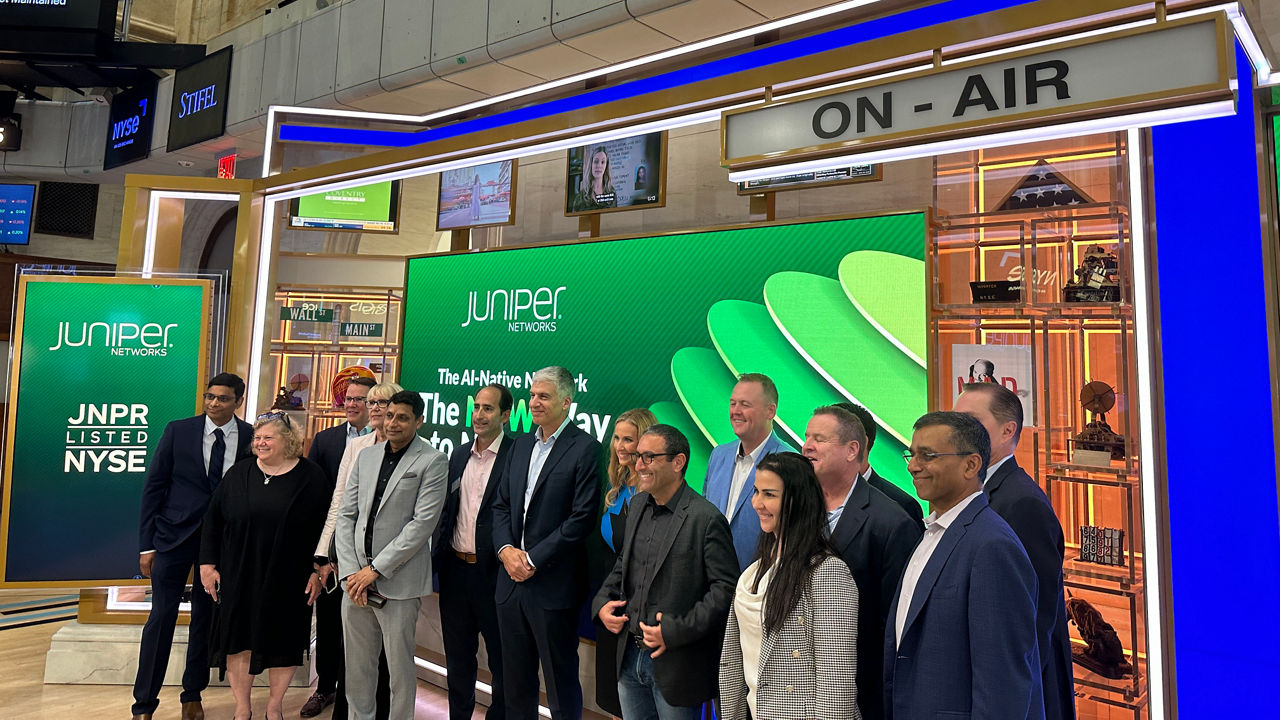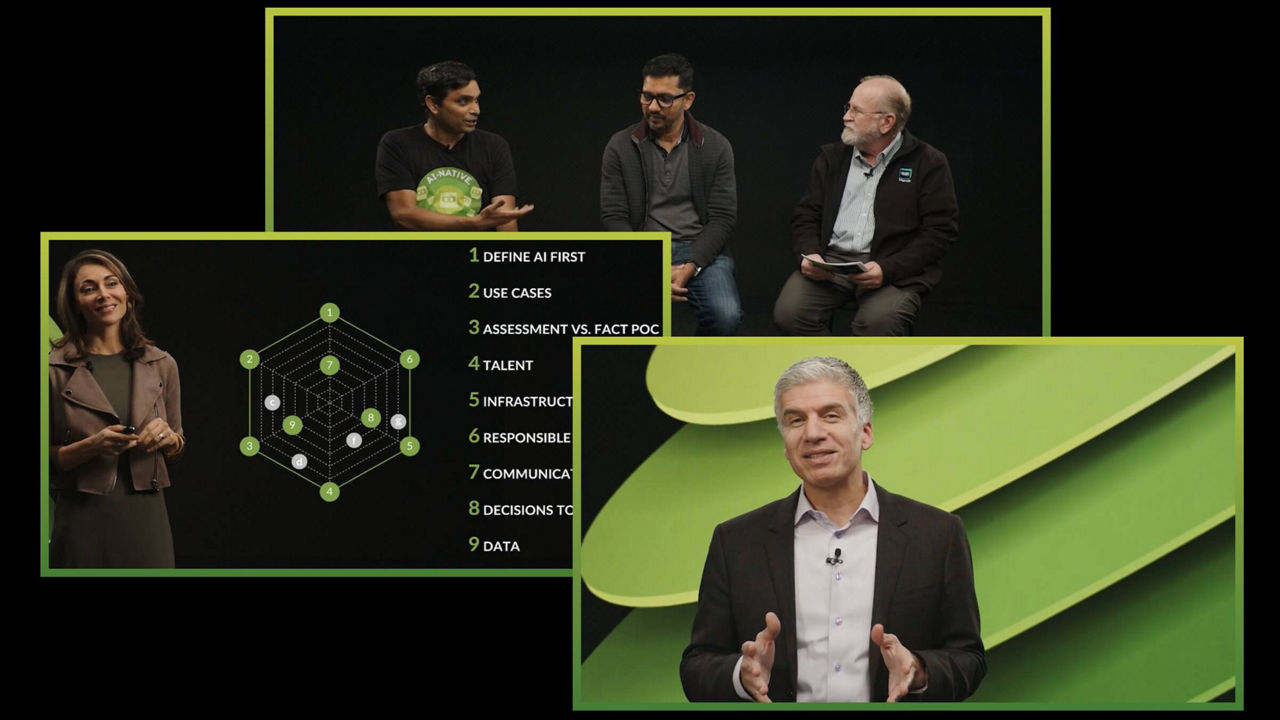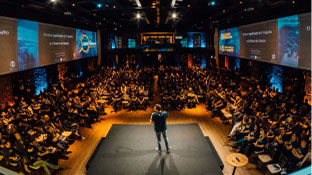As AI reshapes industries from retail and healthcare to higher education and finance, networking—the very backbone of our digital infrastructure is also undergoing a seismic evolution. At Juniper, we’re excited to lead this change by integrating large language models (LLMs), generative AI (GenAI), large experience models (LEMs), synthetic user data (Marvis® Minis), and virtual network assistants (VNAs) into our networking solutions. In this post, I’ll share Juniper’s progress on these innovations and how they address real-world challenges while enabling simplicity and operational efficiency, ultimately freeing IT teams to focus on more strategic initiatives.
The changing landscape: AI meets networking
The network has always been at the heart of IT operations, but traditional approaches—managing command-line interfaces, deciphering complex dashboards, and poring over endless log files—are increasingly unsustainable. There’s a fundamental paradigm shift from just managing the network elements (e.g. AP, switch, router) to managing the client-to-cloud application user experience. While we still need to keep the APs, switches, and routers ‘green’ (ie, LEDs green) and up-and-running, it’s more important to be able to predict and ensure a great user experience. Today, cloud AI for IT operations (AIOps) is not just an add-on; it’s quickly becoming a baseline requirement for transforming how organizations design, deploy, and maintain their network environments.
Think of it this way: While conventional networks react to issues as they emerge, an AI-native network anticipates problems and resolves them proactively. The transformation is akin to moving from a reactive firefighting scenario to a strategic, almost self-managing ecosystem. This evolution is in response to the ever-growing complexity of modern digital environments, where applications like video conferencing, online transactions, and remote learning demand consistent, high-performance connectivity.
In a world where IT teams are stretched thin and the volume of data is universally overwhelming, the need for AIOps has never been greater. AI becomes your trusted copilot that augments human expertise, ensuring networks operate smoothly and efficiently even as demands and threats rapidly evolve.
Chatting with your network: the power of LLMs and GenAI
Imagine if your network could hold a conversation with you, answering questions like, “Are there any unhappy users?” or, “What’s causing the delay in our VPN traffic?”. This isn’t a futuristic dream; it’s happening right now with Juniper’s integration of LLMs and GenAI.
Traditional network operations often require deciphering cryptic logs and navigating myriad interfaces. By leveraging LLMs and GenAI, Juniper solutions now enable IT teams to interact with the network using natural language. In effect, you can simply ask questions in plain English and get clear, actionable, proactive insights in return.
Consider an IT professional in a busy retail environment juggling holiday season traffic spikes and unexpected outages. Instead of spending hours parsing data, they can quickly ask, “Are there any areas causing connectivity issues?”. With its conversational interface, our Marvis AI Assistant translates that query into specific network diagnostics, uncovers the root cause, and recommends prompt remedial actions.
Many organizations are overwhelmed not only by the sheer volume of network data but also by a lack of adequately skilled personnel to manage and interpret it. The conversational interface provided by Marvis AI Assistant alleviates this challenge. It transforms network management from a technical labyrinth into a guided conversation—offering clarity, reducing downtime, and making everyday tasks less burdensome for IT teams.
Imagine a hospital IT director who must ensure that vital patient data flows seamlessly between departments while also managing telemedicine services. With GenAI at the helm, the Marvis AI Assistant becomes the bridge between the complex digital environment and the simple, human-centric language needed to maintain operational excellence.
The science behind experience-driven insights: LEMs
One of the most powerfully disruptive innovations in our portfolio is the use of LEMs, which represent a significant leap in how we predict and prevent network issues before they translate into user frustrations.
LEMs are advanced deep learning models trained on large video collaboration datasets capable of correlating real-time user experiences with network features. For instance, if you’re managing a university campus network and hear complaints about poor video streaming in online classes, an LEM can quickly sift through streams of network data to predict and find which network features are contributing to the bad user experiences and help remedy the problem.
SHapley Additive exPlanations (SHAPs) demystify and explain the decisions made by the model. In other words, not only does the LEM predict issues, but SHAP explains why a network feature or particular network segment is contributing to the poor user experience. Whether a misconfigured VPN, overloaded Wi-Fi access points, or an underperforming switch, SHAPs helps identify the root cause. This dual capability allows IT teams to mitigate problems at the source—be it a misaligned QoS setting in a retail outlet or network latency affecting remote student engagement in a higher education setting.
The key value of an LEM lies in its predictive power. By foreseeing issues before they impact users, IT teams can intervene early, transforming their role from reactive troubleshooters to proactive strategists. This capability is particularly valuable in healthcare settings, where even a momentary network hiccup can disrupt critical patient services.
The self-healing network: Marvis Actions and Marvis Minis
Imagine a network that not only identifies problems but also fixes them automatically, creating a self-healing, self-correcting environment. This is where Marvis Actions and Marvis Minis come into play.
Marvis Actions is the self-driving component of Marvis AI that surfaces potential network issues through a dedicated “Actions” view. Here, IT teams aren’t just left with a list of problems; they receive clear, prioritized recommendations on how to resolve them. Whether it’s a Wi-Fi coverage gap at a retail store or an unstable switch port causing connectivity issues in a corporate campus, Marvis Actions provides a plan.
For many of these actions, IT administrators can empower Marvis Actions to execute fixes autonomously. This “self-healing” mode means that, for common issues, the network corrects itself without requiring manual intervention—saving valuable time and resources while reducing downtime.
Complementing Marvis Actions is Marvis Minis—a digital twin that simulates user behavior. These “synthetic users” continuously test the network by mimicking typical user activities. For example, they might attempt to log in to a corporate Wi-Fi network or connect to a cloud application, thereby proactively identifying potential roadblocks even before real users report problems.
Think of Marvis Minis as your network’s early-warning system. In a busy hospital, for instance, this digital twin might detect a misconfiguration in DHCP or ARP that could affect emergency response systems. Once flagged, Marvis Actions kicks in to recommend or even initiate corrective measures.
Juniper’s AI-native networking advantage
Choosing the right partner in the digital age is critical. At Juniper, our relentless focus on AI-native networking innovation isn’t just about staying ahead of technological trends—it’s about fundamentally rethinking how networks operate. Here’s why our approach matters:
- Enhanced operational efficiency: With AI-driven insights and automated processes, IT teams can shift from constantly firefighting issues to focusing on strategic initiatives that drive business growth
- Simplified complexity: Our solutions demystify the traditionally complex world of network management by translating technical data into clear, actionable recommendations
- Proactive problem resolution: Predictive models like LEM and self-healing mechanisms embedded within Marvis Actions reduce downtime and enhance the overall user experience—be it in retail environments facing peak shopping hours or higher education institutions managing virtual classrooms
- Security and compliance: Automation and continuous monitoring help identify and resolve potential vulnerabilities before they can be exploited, reinforcing a robust security posture across industries
- Sustainability without compromise: Bringing sustainability into design and engineering, Juniper Networks’ optimized silicon, smaller forms, and AI-native power management increase exceptional energy efficiency without sacrificing performance
- Empowered IT teams: By offloading routine tasks to smart automation, IT professionals are free to pursue innovation, optimization, and growth initiatives
When you partner with Juniper, you’re not merely purchasing networking hardware and software—you’re investing in a future where your network intuitively understands and optimizes itself. Imagine a scenario in a healthcare setup where network disruptions no longer distract IT staff from patient care. Or, a retail chain where your network anticipates issues during a flash sale, ensuring seamless customer experiences. With our AI-native approach, this future is already here.
Your invitation to a smarter, safer network future
Our journey toward self-driving, intuitive networks is just beginning, and the potential to redefine your digital landscape has never been greater. If you’re ready to explore how these AI-native innovations can transform your network operations—whether you’re in healthcare, retail, higher education, or any other industry—let’s start a conversation.
Learn more about how Juniper’s comprehensive, AI-native networking solutions are setting new industry standards. Request a demo, schedule a consultation, or simply reach out to discuss how we can tailor our solutions to meet your unique challenges. Don’t miss our replay of the recent Mobility Field Day 13 presentation. And be sure to listen to The Q&AI Podcast, where I dive into AI’s transformative power across industries with world-class innovators and thought leaders.




